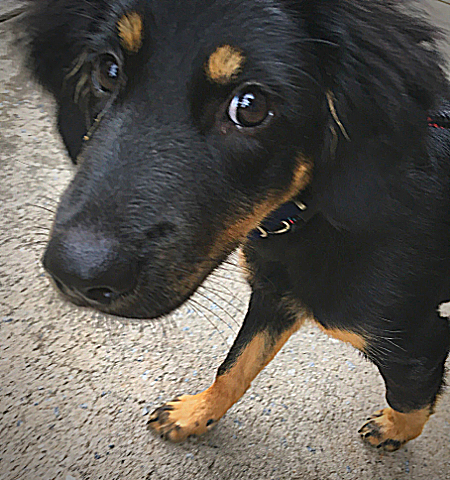
Out of all of the things that you should be doing with your puppy, perhaps the most important is socialization. However, socialization is not what most people think it is. For many people socialization means letting their dog interact with any and all dogs or people that they come across. I highly recommend NOT doing this. (Also, keep in mind that just about everything I am going to explain in this post applies to older dogs, as well, not just younger ones.)
First, let me give you this little is piece of wisdom: when it comes to socialization, quality is more important than quantity. The goal of socializing your pup is to make interactions and exposure positives experiences. All too often many owners ignore or fail to recognize when their pup is uncomfortable about greeting someone new, and they end up trying to force some kind of interaction to happen. Trust me when I say this is not the best approach to take.
If you can tell your puppy is hesitant about greeting someone, let your pup initiate the interaction. This means allowing your puppy to take his or her time to sniff out and be curious about the scary new person or animal. (This is easier said than done when the other greeter is another dog, but I will touch upon this later.) Your pup might simply observe the other person. This is totally okay.
However, If your pup is hyper-focusing on something that is intimidating and unfamiliar, it’s a good idea to help him or her to focus more on you. You can do this by using some tasty treats or simply working on some obedience (if your dog or pup is barking, growling, and becoming reactive, I will talk about how to deal with this further down in this post).
If you allow your nervous pup to investigate a new person, it is important that the individual ignores your pup. If the person creates excitement and tries to do “sweet talking”, this will likely cause the dog to become more nervous. This is how negative associations begin forming. Essentially, the puppy, trying to show signals that he or she is uncomfortable about someone new, learns that humans are not mindful of these signals.
This is why it’s so important to read your furry friend. If he or she is comfortable and happy about meeting someone new, then by all means let that interaction happen! But if your furry friend is nervous, having the person ignore your dog until you see a more relaxed and comfortable demeanor is the best thing to do. This is because the dog learns that people are actually mindful and respectful of the nervous signal that he or she is giving.
Also, if you want to have your shy puppy or dog take a treat from the someone, this is acceptable, so long as the person remains calm and quiet. Simply have the person hold out his or her hand with the treat in it, avoid direct eye contact with the animal, and allow the dog to approach and take the treat. You can also have the person simply toss the treat.
Now let’s talk about what to do if your dog is barking or growling at someone. If this is the case, you should either correct the barking and growling in an effective manner, or otherwise remove the dog from the situation. By not correcting barking and growling, you are essentially allowing the practice of anti-social and negative behaviors. Left unaddressed, it is possible that these behaviors can lead to more aggressive and intense behaviors down the road. If you are unable to effectively correct the barking and growling, its best to simply remove your dog from the situation.
Also, keep mind that you cannot begin to create any positive associations while negative behaviors are being practiced. If you want your dog or pup to be more comfortable around new people, you first have to get your dog out of the mindset of trying to scare people away. Once you’ve stopped your dog from doing this, you have opened the doorway to creating more positive associations.
I mentioned earlier that things can be a little bit tricky when your nervous canine friend is meeting other new canine friends. This is because it is much more difficult to control and determine how the other dogs will interact with yours. The first step in letting your puppy or dog socialize with others is to make sure you trust and know the other dogs. You want to trust that any given animal will not harm yours, and you want to have a fairly good idea of how any other animals will behave around yours (also, make sure to check out my blog post on why you should avoid dog parks.
If you are socializing your timid dog with another one that is overbearing and overexcited, this will probably not be a good match. You want to try to create interaction with other calm, cool, and relaxed dogs. If a dog begins to put too much pressure on yours, and your dog or puppy begins to flee or act defensively, it is best to make the other dog give yours some space.
